How to buy a Winch guide
Learn how to choose the right winch for your vehicle. Understand load ratings, electric vs. hydraulic options, and get expert buying tips.
-

A winch is a tool and understanding a few basics about it along with what you plan to do with it will help you find the right winch from the hundreds available to buy.
You will need a winch able to pull 1.5 times your vehicle's GVWR (Gross Vehicle Weight Rating). This should be marked on the vehicle body, on the driver's door jam or maybe in your vehicle owner’s manual.
A typical Land Rover Defender is around 3,300kg (7,275lb) making the calculation:
1.5 x 7,275 lb = 10,912.5 lb
You’ll have to move up to the next standard winch size which is a 13,500lb winch and this would be the right pulling power for a Defender.
Winchmax sells more 13,500lb winches than any other pull rating and you can a 13,500lb winch without a cable, fairlead or hook from a few reputable manufacturers including Winchmax. Even at this entry level, we include a wireless remote and a winch cover to help keep your winch protected from the elements.
TYPES OF WINCH
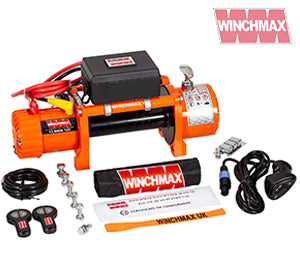
Electrical winches are easier to install and typically have faster-winding speeds.
They also come with a wireless remote control feature. So you can stand safely away from the vehicle and winch during recovery. Electrical winches draw a lot of power from your vehicle’s electrical system.
Electric winches can overheat if they are used for an extended period. If you plan to use your winch all day long, then you should go for hydraulic winches.
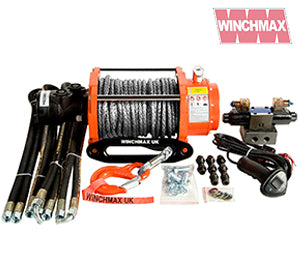
Hydraulic winches are more reliable and not affected by low battery power or water.
A hydraulic winch can continue operating for extended periods of time, as the engine is running. But a hydraulic winch requires extra hydraulic lines and plumbing.
So, not all hydraulic winches fit every vehicle or mounting application.
Winchmax sells a range of Hydraulic winches to suit most professional use. Our best selling Hydraulic winch comes with a full control system
STEEL OR SYNTHETIC ROPE (CABLE)?
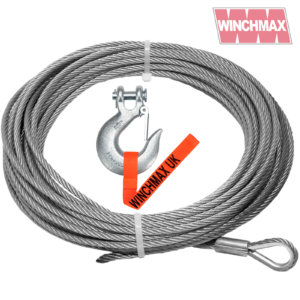
Steel Rope (cable) is usually a long-lasting, durable product and quite easy to maintain. They are perfect for use in highly abrasive terrains.
This winch rope will be a better option for you if you often go off-roading through mud sand and rocks.
However, steel cables will fray, corrode, and sometimes break. Ultra-violet wear is not a factor with steel rope, and it may be a better choice for you if you do not frequently use your winch, but it can also rust if neglected.
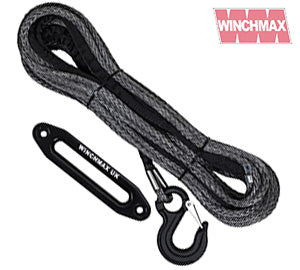
Synthetic Rope is more flexible, lighter, stronger, and easier to handle than a steel rope. They are a better option for recovery and trail winches.
However, if not cared for properly, it can degrade from the inside out or suffer from UV damage. Additionally, synthetic rope is prone to damage by abrasion if dragged on rough surfaces when winching.
Make sure to use a heavy-duty rope sleeve/chafe guard over the obstacle when winching. Regularly inspecting and cleaning synthetic rope after dusty or muddy trail runs will lengthen the life of synthetic winch rope. To clean a synthetic line, simply unspool your line and dunk it into a bucket with water and mild soap.
WINCH REMOTE CONTROL
Remote control systems allow you to control the winch direction from a safe distance. There are two types of remote: corded and cordless. While choosing a winch, ensure it comes with any remote control system. It’s better if the winch offers wireless remote control.
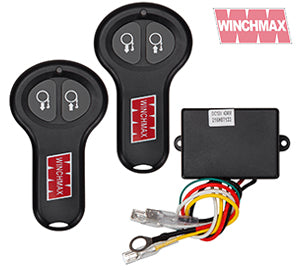
All Winchmax winches come with a controller. This may be a wireless controller with an additional hard wired controller or a combination controller that can be swapped from one function to the other.
Winchmax holds stock of all the controllers we provide with a winch, which can be used for all Winchmax winches and most other manufacturers' electric winches.
STEEL OR SYNTHETIC ROPE (CABLE)?
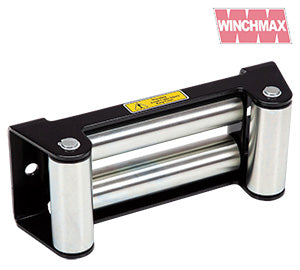
Roller Fairleads
A steel rope must have a good quality Roller Fairlead. The rollers stop the rope from getting frayed as it moves in and out from the winch and helps ensure the rope winds onto the drum smoothly, ready for the next job.
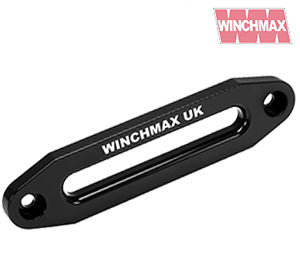
Aluminium Hawse Fairlead
A synthetic rope needs a good quality aluminium hawse fairlead. The softer metal helps reduce the amount of wear and tear to the rope as it travels in and out from the winch.
Most Hawse Fairleads are made from a single piece of cut aluminium. These a very resistant to damage from the elements.
WINCH MOUNTING OPTIONS
The mounting location of the winch is another important consideration. Before choosing a winch, you need to find out how you’re going to mount your winch on your vehicle.
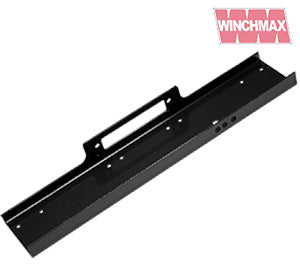
Mounting Plate
The simplest option is the bumper mount.
They’re very easy to install and provide excellent versatility.
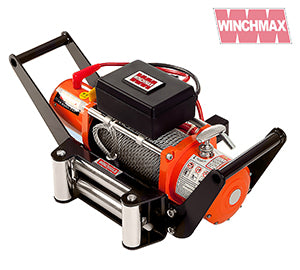
Mobile Mount
This mounting system is a little more complex than the bumper mount.
They’re typically less durable because of the mounting point.
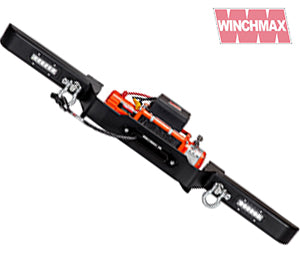
Winch Bumper
This mounting system is becoming popular among real off-roaders.
This bumper looks like really part of the vehicle.
WATERPROOFING
Your winch will face a lot of harsh elements. You should go for a winch that comes with a rated or sealed waterproof motor housing. It will be better if you can choose the same on gear trains. All Winchmax winches come with excellent waterproofing, our solenoids are IP67 rated and our Military Grade winches have upgraded water seals and improved anti-corrosion measures.
WINCHMAX COMBINATION PACKAGES
It is a bit of a minefield to decide exactly what winch, rope, fairlead, or mounting option you need so our experts have created a number of combinations (a combo in Winchmax speak). Each combination of winch, rope, fairlead etc. is created to suit most applications
-

Winchmax 'SL' 13500lb Military Grade Winch with Defender Bumper
-

Winchmax 'SL' 13500lb Winch and Defender Bumper
-

Winchmax Military Grade 13500lb Winch with Defender Bumper
-

Winchmax 13500lb Winch and Mounting Plate
When you buy a Winchmax combination you also save money as we are able to sell a combo for less than it would cost to buy each part separately, so this makes good sense. Our best-selling ‘combo’ kits are above.
Of course, this is not everything. You may need some extra pieces of kit to help you winch heavier loads or firmly secure your load. Winchmax has a range of products and spare parts to help ensure you have a great winching experience.
ACCESSORIES
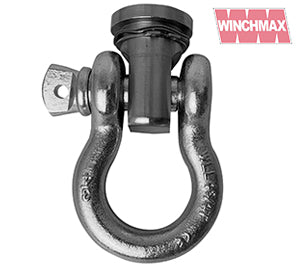
Shackles
The D-Shackle is used for connecting the looped ends of cables, rigging straps, snatch blocks, tree trunk protectors etc.
It offers a threaded pin for easy removal.
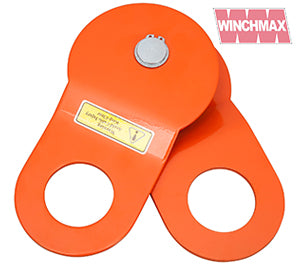
Snatch Blocks
A snatch block can make your winch more capable by increasing the pulling capacity of your winch or changing your winching direction safely without damaging the winch cable.
Note: Even though you just increased your pulling capacity, using a snatch block will cut your winch’s speed of operation in half each time you double it back to an anchor - slowing the winching process.
For example: if you have a 10,000lb winch on your vehicle and you run a line to an anchor with a snatch block, then back to the front of the vehicle, you are now able to effectively pull 20,000lbs. However, you will be going at half the line speed and use twice as much rope.
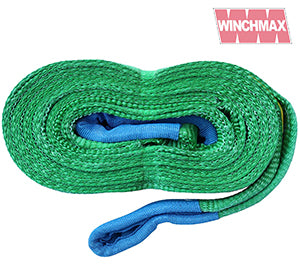
Straps
Although kinetic recovery straps are great for vehicle-to-vehicle recoveries, they are not to be used around a tree or large boulder as a static tree strap.
Tree straps
Otherwise known as static straps or tree trunk protectors can be used to anchor a winch line to a tree trunk or a large boulder before. After placing the strap around the base of a large tree connect the strap with a shackle, attach your winch line to the shackle, and pop a damper on the winch line before starting recovery.
Note: Tree trunk protectors, or static straps, are non-elastic. They should not be used for vehicle-to-vehicle recovery.
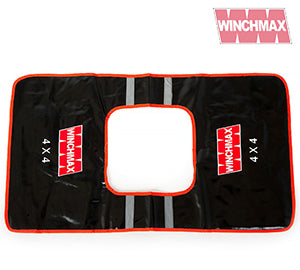
Damper
The duty of winch line damper (blanket or sail) is to prevent recoiling when the line breaks under load. It is necessary if you are using a steel winch line.
You are well on the way to understanding more about your winch and how you want to use it. Here is a list of terms that you may run across when looking at or discussing your winch requirements with a winch specialist.
WINCHING TERMS
Motor: Electric winch motor is powered by the vehicle’s battery. The gear train mechanism gets power from the motor winch turns the winch drum and winds the winch line.
Drum: The drum is a hollow metal cylinder onto which the wire rope is neatly wrapped. It is also called a winch spool. The motor and gear train drives the drum. The direction of the drum can be changed by remote control.
Gear Train: The reduction gear takes the power from the motor and converts the power into a mighty pulling force. This enables the winch to pull any heavy load.
Winch Line: The winch rope is wrapped around the drum and fed through the fairlead. Your winch will either come with synthetic rope or steel cable. The length and diameter of the winch line are determined by the winch’s load capacity.
Winch Fairlead: The fairlead guides the winch rope onto the drum while using the winch, particularly at an angle. It reduces wire rope damage while it enters the winch mount or bumper. There are two types of fairleads: roller fairlead which has four rollers, on the sides top and bottom (recommended for steel ropes). And hawse fairlead is made from a single aluminium casting (recommended for synthetic ropes).
Clutch: When the clutch is in free spool settings, it allows the drum to rotate freely. When the clutch is in an engaged setting, it locks the winch drum to the motor and gear train. You must engage the clutch solidly to winch powerfully.
Braking System: The internal brake system automatically engages when the motor of the winch is stopped and there is a load on the winch line. This prevents the winch from paying an unwanted winch line when the winch is off.
Control Box: All the electronics of the winch are contained by the winch control box. It is mounted on the winch or near it. Many winches offer a waterproof control box to protect them from the elements.
Remote Control: The remote control allows the user to control the winch direction. Plus, it allows the operator to stand clear of the winch and winch cable while operating the winch. Remote controls are hard wired or wireless. Some wireless remotes are dual purpose can also be plugged in with a lead. Useful in case the battery in the remote runs out in use.
No Load Line Speed: this is a measure of how fast your winch can pull the rope in. Measured in feet or meters per minute.






